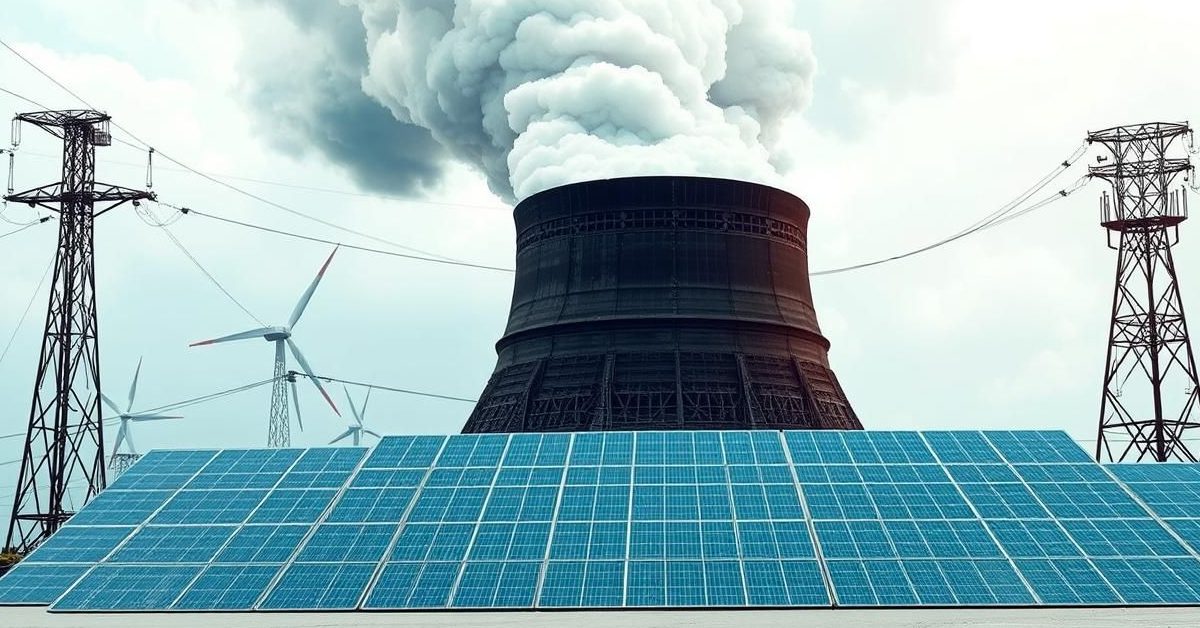India has achieved a significant climate goal five years ahead of schedule, with non-fossil fuel sources now making up over 50% of the country’s installed electricity capacity.
A Green Milestone Achieved Early
As of June 30, non-fossil fuel sources account for 50.1 percent of India’s total installed electricity capacity. This marks a significant achievement, surpassing the 50 percent target set for 2030 under the Paris Agreement on climate change.
Back in 2015, these cleaner sources only represented 30 percent of the nation’s capacity. The recent surge, primarily driven by rapid growth in solar and wind power, has pushed India past this crucial threshold.
Understanding India’s Energy Mix
India’s total installed capacity stands at 485 gigawatts (GW). Non-fossil fuels, including 185 GW from renewables, 49 GW from large hydro, and 9 GW from nuclear energy, now total just over half of this capacity.
Thermal power, primarily coal and gas-based, makes up the remaining 49.9 percent. This is a considerable drop from its 70 percent share in 2015, highlighting the shift towards greener energy.
Installed Capacity vs. Actual Generation
While the installed capacity of clean energy has increased significantly, it’s important to note that thermal power still produces over 70 percent of India’s actual electricity. This is because renewable sources like solar and wind are intermittent; they cannot generate power around the clock.
To reduce the reliance on thermal power and meet the ambitious target of 500 GW non-fossil fuel capacity by 2030, India needs to stabilize and strengthen its national grid infrastructure.
The Challenge of Grid Instability
The rapid expansion of solar and wind capacity, which now accounts for 35 percent of total installed capacity, has put a strain on grid stability. This is particularly noticeable during periods of fluctuating demand, as there hasn’t been a corresponding increase in power storage solutions like battery systems or pumped hydro.
For example, in May 2024, grid managers struggled to meet peak demand due to low renewable generation. Conversely, erratic rains in the same month caused real-time solar prices to drop to zero, emphasizing the need for robust storage solutions to manage energy flow.
Government’s Push for Energy Storage
Recognizing the urgency, the government is taking proactive steps. The Central Electricity Authority (CEA) now advises co-locating energy storage systems with future solar projects to ensure grid stability.
The Ministry of Power has also expanded its viability gap funding (VGF) scheme for battery storage. Additionally, significant pumped hydro capacity is expected by 2032, and an inter-state transmission system (ISTS) waiver for storage projects has been extended to encourage development.
Overcoming Hurdles in Implementation
Despite policy support, the execution of battery storage projects has been slower than anticipated. High upfront costs, import duties, and challenges with domestic content requirements have played a role. Furthermore, China’s dominance in the global battery supply chain poses a strategic risk.
Approvals for pumped hydro projects also remain slow, hindering the swift deployment of crucial storage infrastructure across the country.
Strategic Shifts and Rooftop Solar
The recent expiry of the ISTS waiver for solar and wind projects, effective June 30, is expected to help ease transmission congestion. This change encourages developers to build projects closer to demand centers, reducing long-distance power transmission.
Concurrently, the ‘PM Surya Ghar: Muft Bijli Yojana’ scheme is promoting residential rooftop solar installations. This initiative aims to decentralize power generation, further contributing to grid stability and reducing reliance on large-scale transmission. The scheme plans to add 27 GW by March 2027.
Addressing Remaining Hurdles
While the shift towards hybrid tenders (combining solar, wind, and storage) is positive, several challenges persist. Around 30 GW of older renewable energy projects are still awaiting power purchase agreements (PPAs), leading to potential cash flow issues for developers.
A significant concern is the strain on the supply of high-voltage direct current (HVDC) transformers, essential for long-distance renewable power transmission. With limited global manufacturers and surging demand, delays in ongoing transmission projects could worsen grid access issues and slow capacity addition.
- India reached 50.1% non-fossil fuel electricity capacity by June 2024, five years ahead of its 2030 target.
- Despite the milestone, thermal power still generates over 70% of the country’s electricity due to the intermittent nature of renewables.
- Lack of sufficient energy storage capacity is a key challenge, causing grid instability during fluctuating demand.
- Government initiatives are pushing for more storage, but project implementation faces high costs and supply chain issues.
- Expiry of the ISTS waiver and focus on rooftop solar aim to decentralize generation and ease grid congestion.
India’s journey towards a truly green energy future involves not just adding capacity but also building a resilient and stable grid capable of integrating a diverse range of energy sources.














